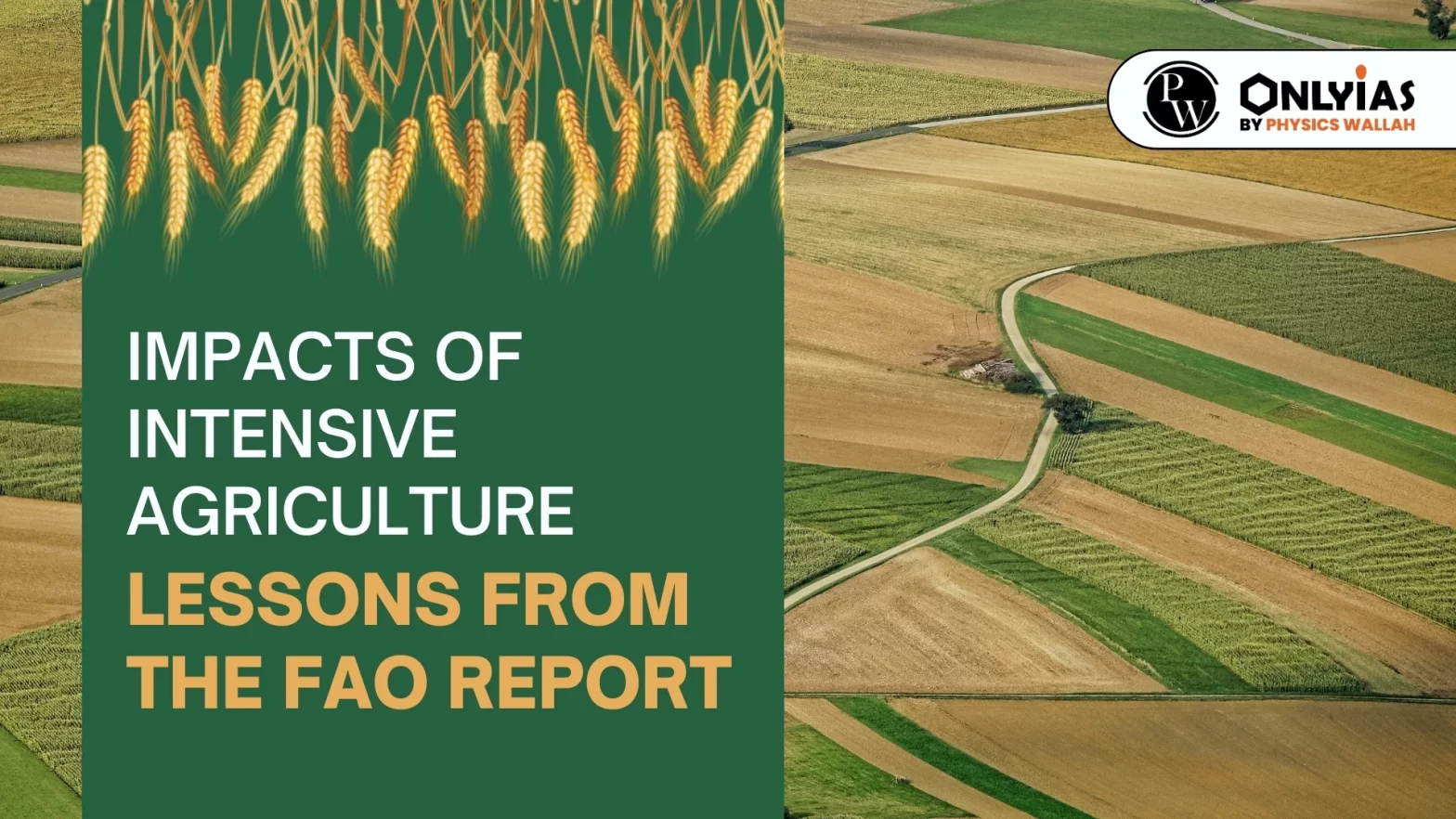Context: This article is based on an Editorial “Feeding humans has trapped the world in debt, degradation: FAO report” Which was published in the Hindu. A recent report from the United Nations Food and Agriculture Organisation (FAO) highlighted that the hidden costs of global agrifood systems have surpassed an astonishing $10 trillion.
FAO Report on Hidden Costs of Global Agrifood Systems
- Concern with the Report Findings:
- A High Cost: In middle-income countries, these costs constitute nearly 11% of the GDP.
- Exhibits Severe Impacts: It exhibits higher poverty, environmental harm, and health-related impact (including undernourishment and unhealthy dietary patterns).
- Other Findings of the Report:
- Reason of Impacts: Unsustainable business-as-usual activities and practices.
- Need to do: To transform agrifood systems.
- Ways that can be used: To shift to multi-cropping systems that have the potential to protect farmers’ well-being, improve nutritional outcomes for our communities, and positively impact ecological health.
Must Read: Agriculture Most Climate Affected Sector: UN FAO
What are the impacts of intensive agriculture?
- Seed Sovereignty: The purchase of seeds and fertilizers from multinational corporations and fertilizers undermined seed sovereignty.
- Indigenous Knowledge: It dismantled the Indigenous knowledge systems of farmers.
- Monoculture Shift: It shifted diverse crop varieties such as pulses to monoculture plantations.
- Nutritional Requirement: It compromises the nutritional needs of households.
- Ecological Impacts: Intensive agriculture impacted soil fertility and groundwater extraction.
- Debt to Farmers: It results in privatization and deregulation of agricultural inputs and leads to increased indebtedness among agrarian households.
- In 2013, the debt-to-asset ratio of a farmer household was 630% higher than in 1992.
- Agriculture in India has been becoming increasingly unviable: the average monthly household income of a farming household is only Rs 10,816.
What are the impacts of the policy environment on agriculture?
- The National Food Security Act 2013: Under it, 65% of households in India have legally assured a right to food at subsidized rates through the Public Distribution System and welfare programmes such as the Integrated Child Development Services and the Mid-Day Meal Scheme.
- Due to Subsidized Rates through the Public Distribution System: Rice and wheat are heavily favored. Hence, the area under rice and wheat increased by nearly 20% and 56% respectively between 1966-67 and 2017-18.
- Other Crops: Water-intensive cash crops flourished under policies favoring investments in dams and canal irrigation (sugarcane) and free electricity for borewells (arecanut).
- Impact: Coarse grains such as jowar, bajra, ragi, maize, and barley are not paid much attention as they constitute less than 1% of total foodgrain procurement.
- The Global Food System Structure: It also has a direct impact on both farmers and soil.
- Example: Between 2012 and 2016, large fluctuations in soya prices in the global market.
The Path Ahead to Strengthen India’s Agrifood Systems
- Need Diversification of Crops: It would enable cash provision from commercial crops, food, and fodder production, offer ecosystem services such as nitrogen fixation and pest traps, and support the local biodiversity. It also collectively contributes to improving soil health.
- Increased Millets Production: Millet’s yield per hectare is comparable to those of rice and wheat, is more nutritious, grows in semi-arid conditions without burdening groundwater tables, requires minimal input, and provides a diversified food basket.
- Need to Redirect Subsidies: Instead of incentivizing farmers, there is a need to pay farmers for their contribution to sustaining natural capital.
- Addressing challenges related to local seeds, institutional arrangements for market access, drudgery, and the need for farm labor is crucial to envision a transition.
- Affirmative Actions by Farmers:
- Farmers need to shift away from mono-cultivation.
- Need to adopt natural farming practices.
- Diversification of income through value addition, incorporating livestock and poultry.
- Transition Model: Those economic models and transition pathways are required to be adopted that have the potential to improve ecological outcomes for the landscape and sustain farm incomes in both the short run and the long run.
- Collaboration among institutions, policymakers, and social groups is required to articulate economic incentives for farmers to shift from high-input monoculture to diversified cropping.
- A systemic shift in food regimes, from local to global value chains, is essential and the starting point for addressing these complex systemic issues could arise from local efforts, such as the diversification of farms.
Conclusion:
The FAO report underscores the staggering hidden costs of global agrifood systems, revealing the multifaceted impacts of intensive agriculture on economies, ecosystems, and human well-being.
![]() 7 Dec 2023
7 Dec 2023

